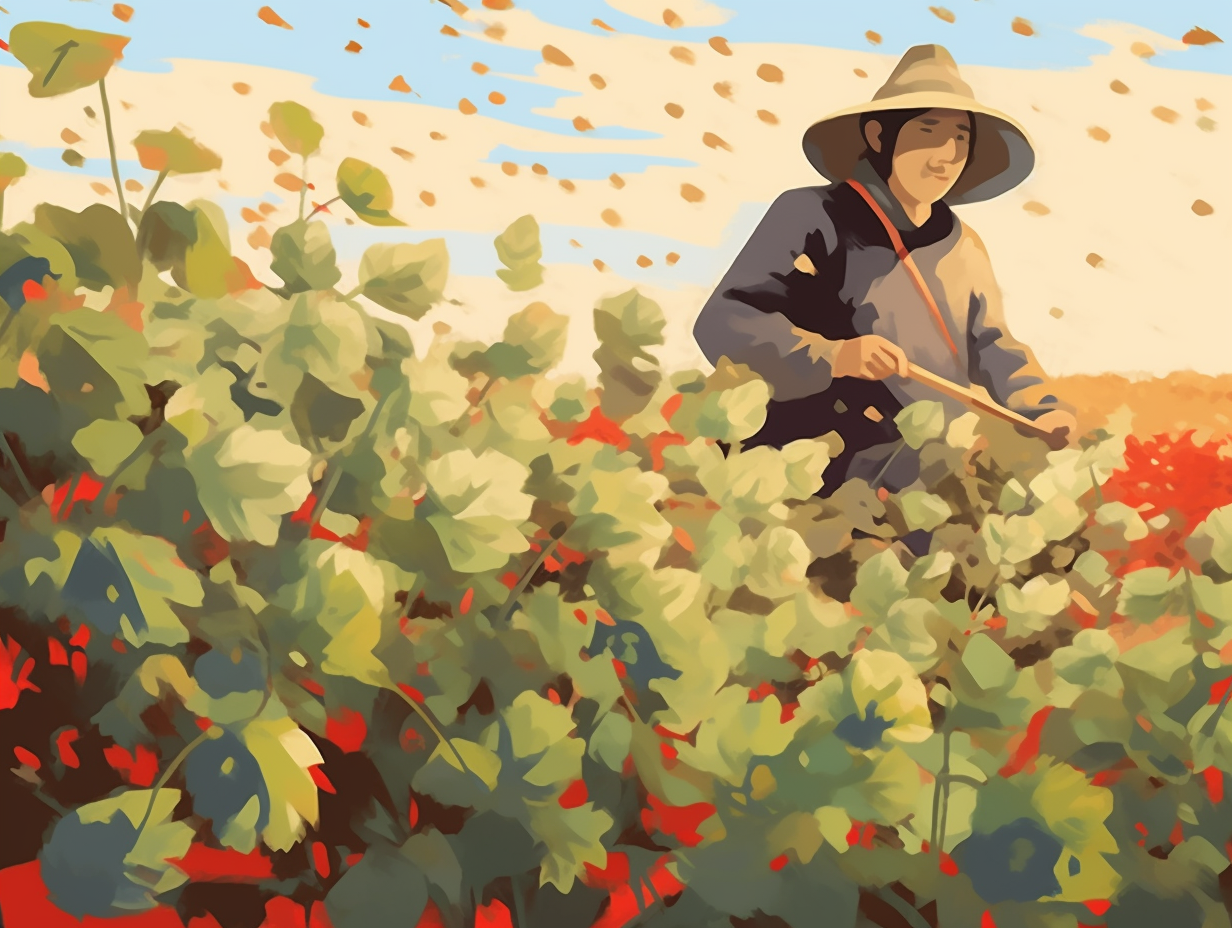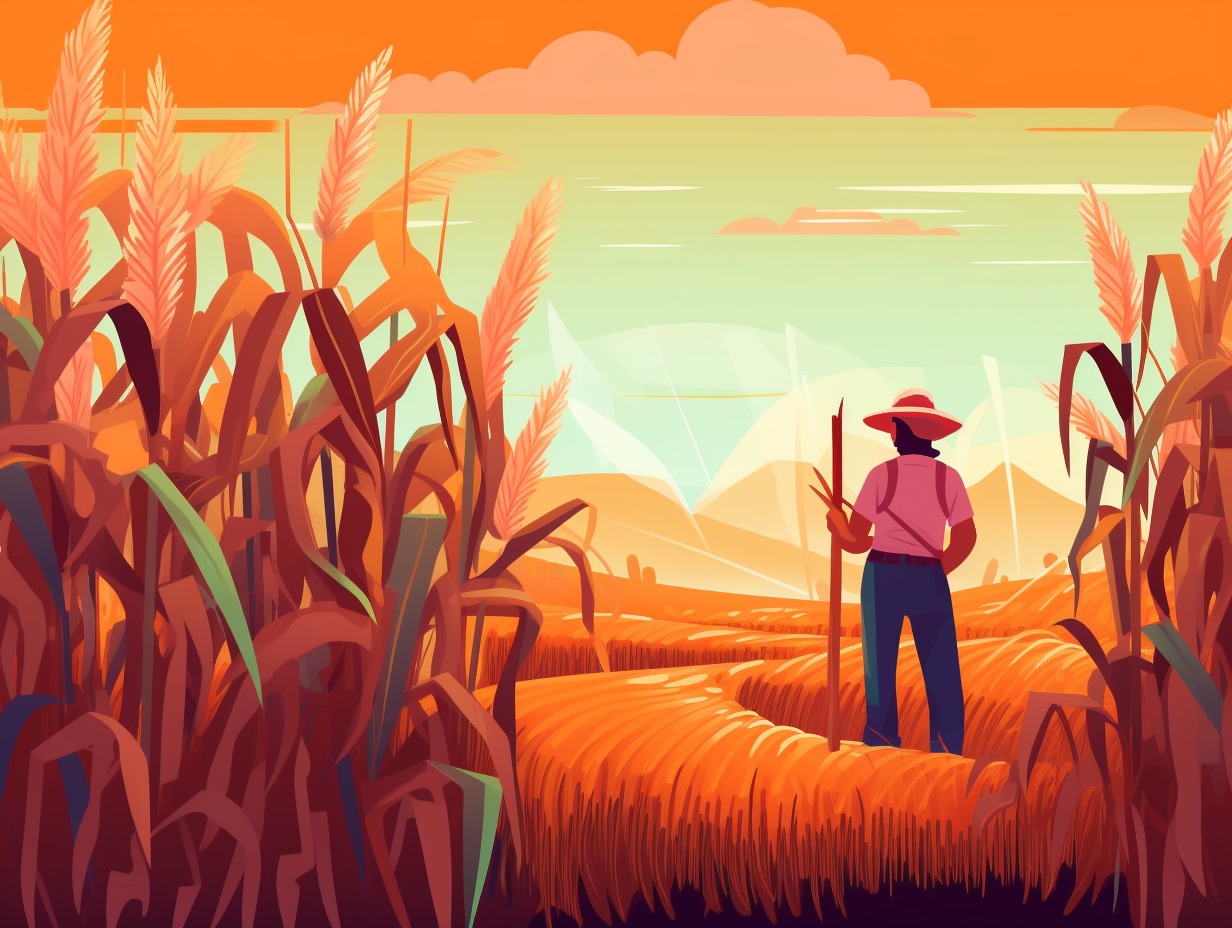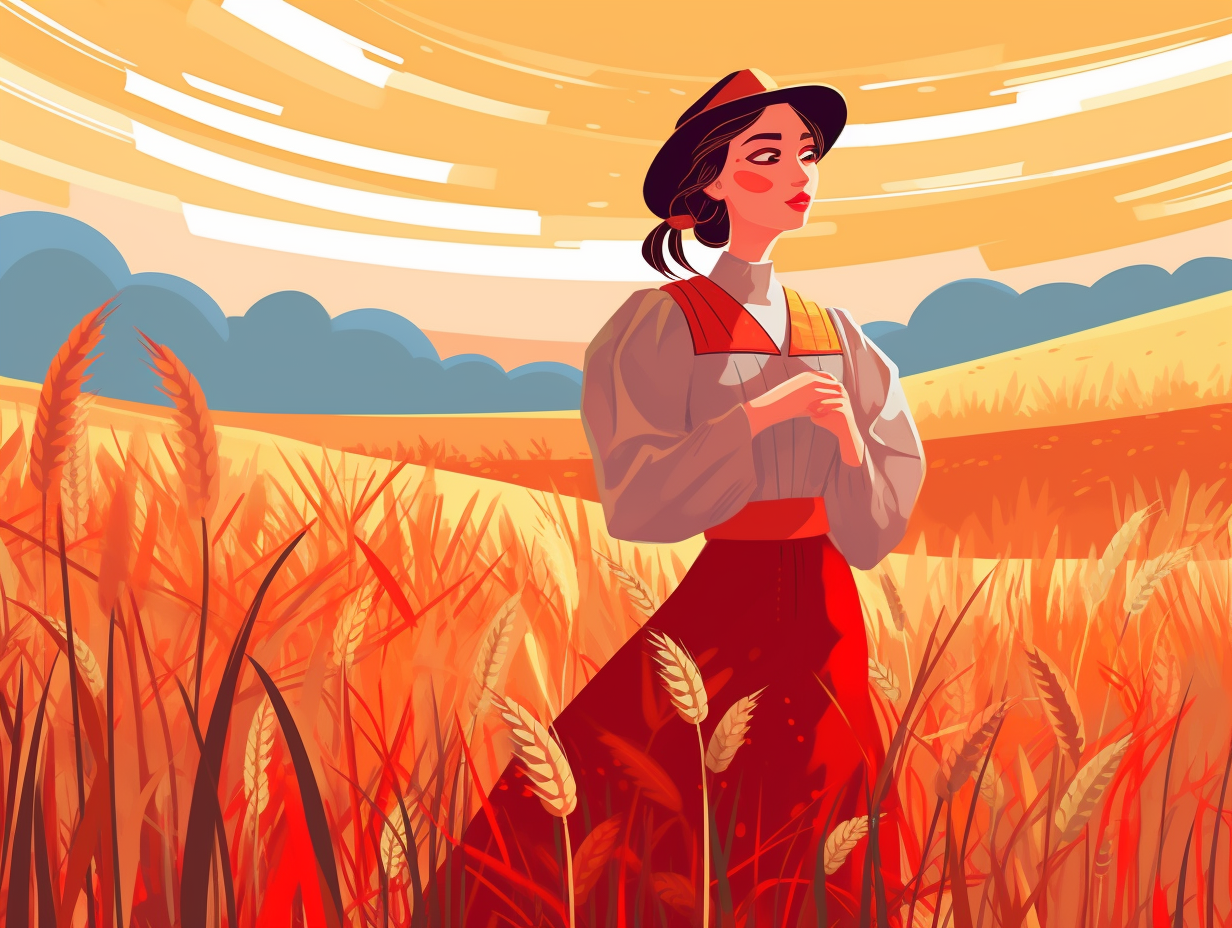Discover the Wholesome World of Farming: Top 14 Fun Facts about Agriculture You Won't Believe!
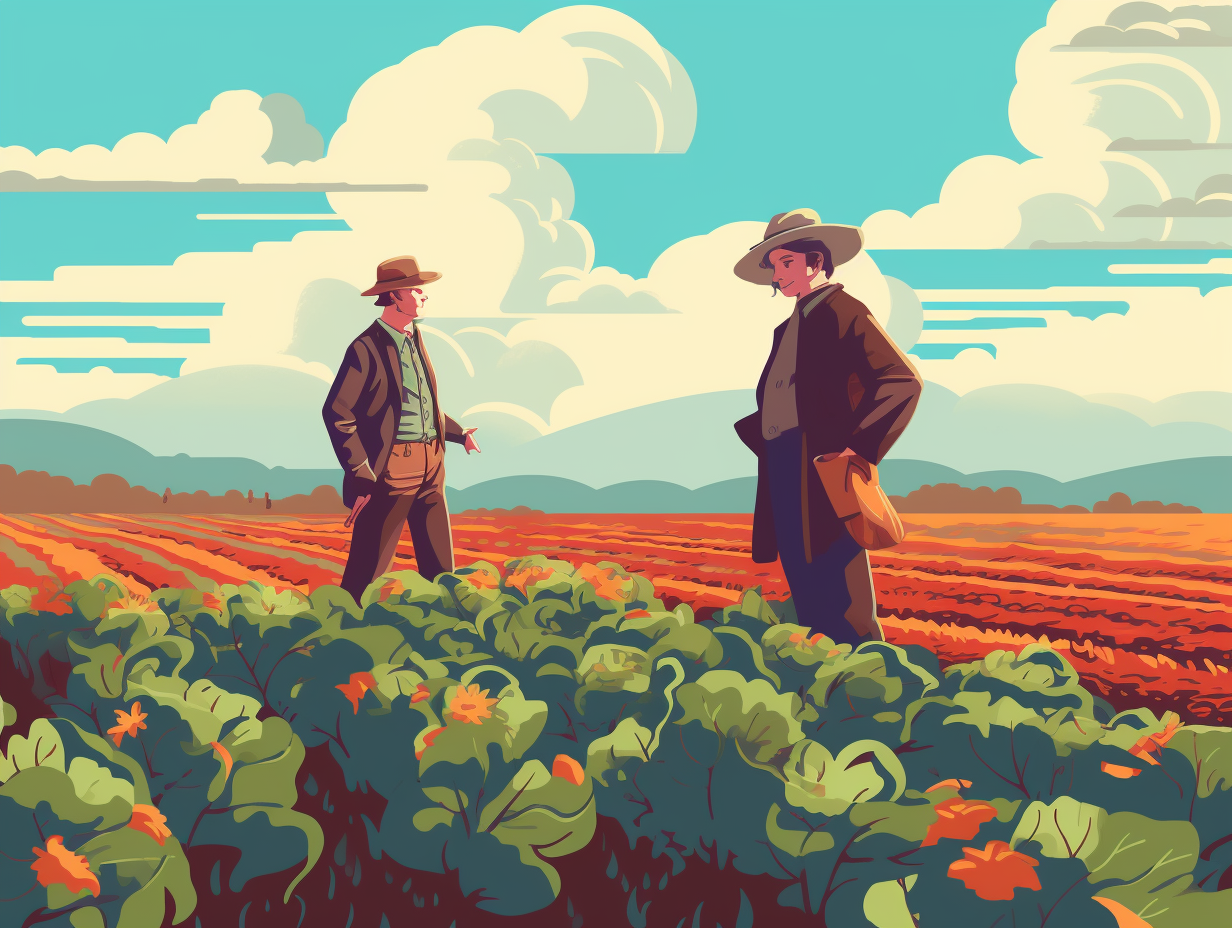
1. Founding Fathers of Composting
In a plot twist that would make M. Night Shyamalan envious, two founding fathers were not only building a nation, but nurturing the earth as well: George Washington and Thomas Jefferson, when not debating the finer points of democracy, experimented with innovative farming practices like composting, and by the early 1900s, 90% of fertilizer in the United States was derived from compost.
Source => texasorganicsoil.com
2. Tech-Savvy Dutch Dairy Farmers
Holy cow, Bat-barn! The Dutch dairy farmers have turned into tech-savvy udder superheroes: Despite facing shrinking farms due to strict regulations, they're using technology and collaboration to make innovations in dairy sustainability, keeping their cows content and hooves-ting a lesser carbon hoof-print.
Source => darigold.com
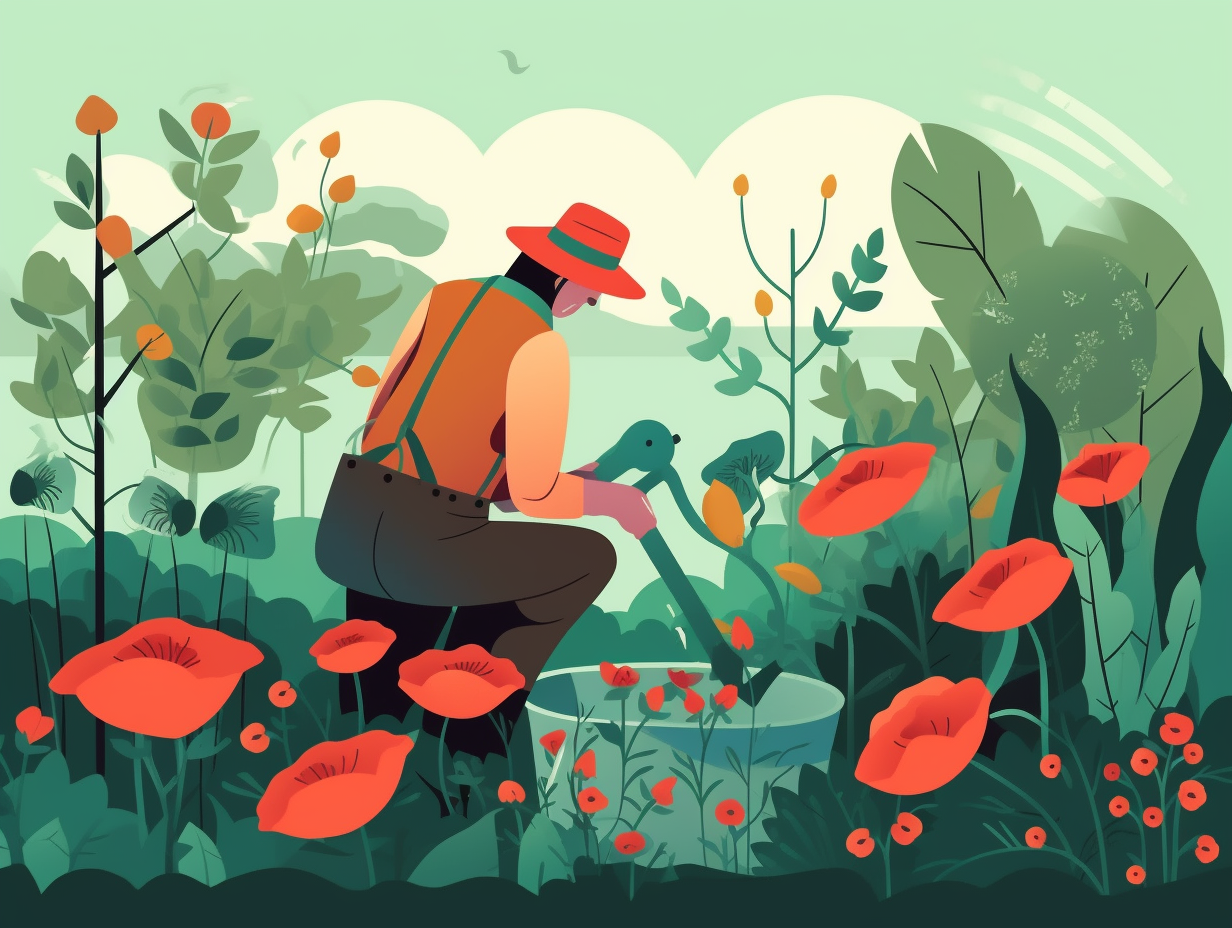
Discover the surprising connection between female voices and thriving plants! Learn how a Royal Horticultural Society study found that tomato plants exposed to women's voices grew taller than those serenaded by men. 🌱🎶👩
=> Fun Facts about Gardening
3. Earthworms: Slimy Superstars
Wiggle like you've never wiggled before, because these slimy superstars are the unsung heroes of agriculture: Over 3500 known species of earthworms exist worldwide, playing a crucial role in improving soil structure and fertility, accelerating plant litter breakdown, nutrient transformation, and plant nutrient uptake, as well as enhancing nitrogen mineralization and other nitrogen transformations.
Source => scialert.net
4. Agave Plant: One-Hit Wonder
What did the agave plant say after its first bloom? "I'm too young to die!" Alas, it's a one-hit-wonder: Though agave plants are often called century plants, they don't actually take 100 years to grow before flowering. Instead, they bloom once and then die, but they do produce offsets or "pups" that can be harvested, transplanted, and grown into new plants.
Source => birdsandblooms.com

5. Ancient Egyptian Scarecrows
Before tech-savvy birds could tweet about it: The Ancient Egyptians invented the first scarecrow, using wooden frames and nets to catch pesky pigeons in their wheat fields along the Nile River. This ingenious invention was later adopted by the Greeks and the Japanese, giving birth to the rich and varied history of the humble scarecrow in agriculture.
Source => thanksgivingpoint.org
6. International Rice Gene Bank
Rice to meet you, I'm gene bank numero uno: The International Rice Gene Bank houses a whopping 90,000 samples of cultivated and wild rice species, such as Indica and Japonica, along with speciality and aromatic varieties – making it a treasure trove for researchers working to improve global rice production.
Source => riceassociation.org.uk
7. Redwoods: Groot-like Fire Guardians
As if taking tips from the Avengers, redwoods like the legendary Hyperion in California have thickened their outerwear to become the Groot-like gods of the forest, guarding their precious insides from foes like fire: By growing bark up to a foot thick, these trees have developed a natural fire barrier that shields their vital cambium layer and enables them to thrive despite wildfires for thousands of years in their forest realm.
Source => en.wikipedia.org
8. Chickens: Austronesian Voyagers' Companions
Why did the chicken cross the globe? To run errands for the Austronesians, of course! Chickens were domesticated from red junglefowl in Southeast Asia around 8,000 years ago and became a key member of the Austronesian voyagers' entourage, helping them colonize Oceania by providing much-needed food resources and entertainment in the form of cock-fighting. No fowl play here: Chickens (Gallus gallus domesticus) were tamed from their wild ancestor, the red junglefowl (Gallus gallus), with molecular evidence from whole-genome sequencing revealing multiple maternal origins and their worldwide spread, truly earning their wings in agricultural history.
Source => en.wikipedia.org
9. Truffle-Hunting Dogs vs. Pigs
When pigs fly... or rather, when pigs don't hunt truffles anymore: In Italy, the use of pigs for truffle hunting has been banned due to the damage they cause to the terrain, and dogs have become the favored truffle seekers. Breeds such as the ancient Lagotto Romagnolo are commonly used, but practically any dog can be trained for the task depending on the size of the orchard and the conditions.
Source => napatrufflefestival.com

10. Evergreen vs. Deciduous Trees
Talking fir-tunately about trees, evergreen leaves have decided to stick it to winter and stay stylishly green all season long, giving life to a festive and hopeful landscape: In contrast, deciduous trees swap their fashionable foliage for practicality, shedding their broad leaves to conserve water and protect themselves from frigid temperatures, staging a memorable and colorful autumnal exit before hibernating through the cold months.
Source => jainsusa.com
11. Americans' Potato Party
Feeling a-peeling? You're not alone in the great potato party: An average American consumes 137.9 pounds of potatoes annually, with 50.7 pounds as fresh, 55.3 pounds frozen, 16.9 pounds as chips, 13 pounds dehydrated, and 2 pounds canned – making spuds the ultimate dietary buds.
Source => websites.umich.edu
12. Peat Moss: Perfect pH Protector
If peat moss had a dating profile, it would boast about maintaining a perfect pH level while giving bacteria the cold shoulder: Peat moss is key to peatlands' extensive carbon storage capabilities due to its low pH that inhibits bacterial decomposition, with its hydrology maintenance being essential for continued carbon sequestration.
Source => researchgate.net
13. The Controversial Green Revolution
Who knew chlorophyll could be so controversial? The Green Revolution played a dual role as both hero and villain in the plot of modern agriculture: On one hand, it significantly increased crop yields and income in developing nations, while on the other, it caused environmental and socio-economic ramifications, from loss of biodiversity and increased susceptibility to pathogens, to the displacement of smaller farmers and subsequent unemployment in rural areas. Hooray for progress?
Source => en.wikipedia.org
14. Pineapples: Indoor Fruit Giants
Who lives in a pineapple in a pot on your sill? Spoiler alert: it ain't SpongeBob: Pineapple plants can be grown indoors as houseplants, reaching a towering 5 feet tall and 3 to 4 feet wide, as long as they soak up 6 hours of sun a day and bask in temperatures between 65 and 80 degrees F. For those with the patience of a saint, you'll be rewarded with your very own juicy, fragrant fruit in about three years!
Source => thespruce.com





